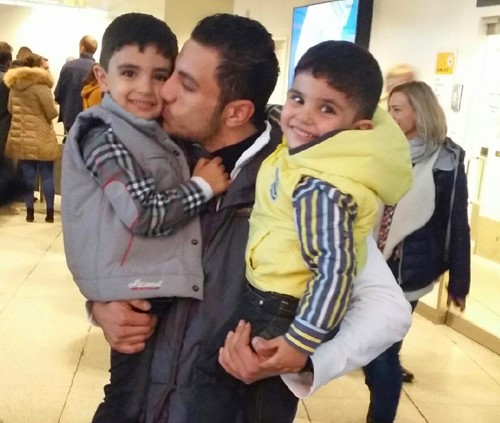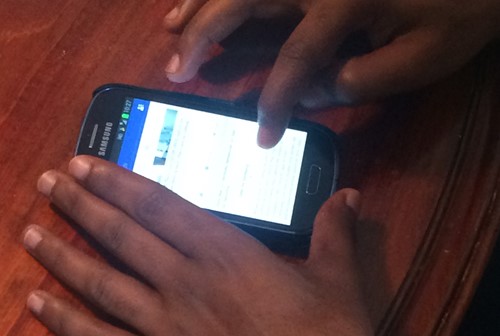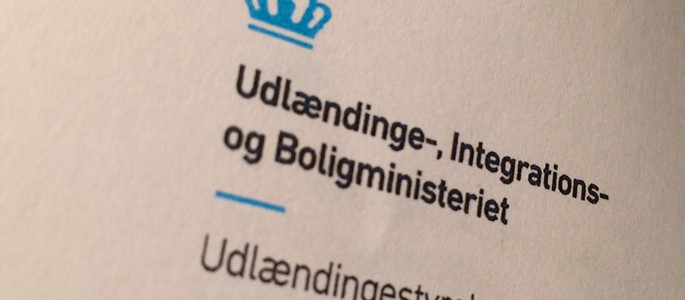Long waiting times and impossible demands for family reunification
Refugees who are granted asylum in Denmark are entitled to bring their nearest family members here. However, as our examples show, there are great problems with this procedure.
Fathers and mothers
Many refugee families are forced to divide themselves up in order to reach safety, both out of consideration to the risks posed by the dangerous journey and the also because of the enormous prices smugglers demand per person (typically 30-70,000 DKK). Therefore, many of them, particularly fathers, have come to Denmark alone. Once they have been granted asylum, they then apply to have their partners and children join them through the family reunification process.
During 2016, the Danish Immigration Service handled and decided 10,500 applications and in September, had to increase the service goal for complicated cases up from 5 to 10 months (nearly all refugee cases are considered as complicated), despite having hired extra personnel following the large number of arrivals in 2015. In October, many cases were pushed back by a further 3 months.
As a refugee, you don’t have to live up to the normal Danish criteria for family reunification in terms of age, residence, self-sufficiency, bank guarantee etc. However, you must be able to document both marriage and parenthood. The requirements in terms of documentation can be very difficult, or even impossible, for refugees to fulfil, as some may have lost their documents along the way or never actually been issued with them in their homeland.
The application itself isn’t exactly straightforward either and requires experienced or professional help. For refugees, there are 4 different forms to choose among and the longest runs to 29 pages – all of which are only available in either Danish or English. One part of the form must be completed by the individual resident in Denmark, and the other, by (or on behalf of) the family member who wishes to come here. Colour photocopies of various documents must be attached as well as official translations of the same into either Danish or English. Several of the questions are difficult to understand but everything must be signed as a sworn statement.
In order to get your partner here to Denmark, you must provide a valid marriage certificate, and Syrians and Eritreans must have both the civil and the religious version. Many do not have these and as an alternative, you must have lived together as a couple for 18-24 months to be deemed as cohabiting. This can also be difficult to prove and generally, there is little else to go on than the asylum interview, where refugees perhaps don’t understand the significance of the issue and don’t explain their situation in as much detail as is required.

Two young boys arrive from Syria after two years of separation from their father. Private photo.
In terms of children, if the marriage is recognized and they were born during after the marriage took place, a birth certificate will normally suffice. However, in many of these cases, the Danish Immigration Service demands a DNA test to prove consanguinity. This involves children (and parents, where relevant) travelling to a Danish embassy in order to provide an oral swab. In some cases, it can be utterly impossible to get to a Danish embassy, so it is permitted to use another embassy, eg the Norwegian Embassy.
As stated before, the handling of these cases is neither quick nor easy. However, a review of eight cases below illustrates that the screening period prior to the actual handling of the case is far too long. If some details have been overlooked, the applicant shouldn’t have to wait 7-14 months before being informed. On average, the screening time for these eight cases has been longer than the actual case handling time, and the combined waiting time of 2 years is incredibly long, when it often concerns children in extremely unsafe areas. The progression of the cases also seems to be slightly haphazard and applicants receive alternate information along the way. In each of the 8 cases, the applicant submitted all the required information within just a few days, if this was at all possible (documents or DNA test).
Read interview (in Danish) with Waleed, who is one of the 8 fathers.
During handling, it’s completely impossible to get in contact with the Danish Immigration Service – something that also applies to an organization such as Refugees Welcome. The person who answers the phone can never provide information on a case and emails are ignored. Many refugees call the Immigration Service every week in desperation, which is just a waste of everyone’s time.
In each of the 8 cases, the individual resident here has been granted convention status, i.e. they are covered by the Convention on Refugees and the 3 years waiting time prior to application doesn’t apply to them.
At the end of October, Refugees Welcome sent a complaint including six of the cases below to the Parliamentary Ombudsman. The complaint was not in reference to the 10-month service goal. Rather, it was in reference to the long screening periods that precede it. The Danish Immigration Service was notified of the complaint shortly afterwards, and funnily enough, three of the cases were decided just a few days later, followed shortly by several more decisions.
The Ombudsman asked the Service to respond to the complaint but they have yet to do so.
EXAMPLE OF A TIME SCALE:
Adhanom (Eritrea):In September 2015, he applies for family reunification for his wife and 1 child and attaches his religious marriage certificate (the only one he has ever had).
In January 2016, the Immigration Service requests a civil marriage certificate. Adhanom replies that he cannot acquire one as he left Eritrea illegally. It then takes more than half a year for the Immigration Service to request DNA tests for the family at the end of June and two more months go by before they send information about where the test can be carried out.
At the end of November, the Immigration Service communicates that they now have all the relevant details necessary for handling the case and that he can expect an answer on 22nd August 2017 – in other words, 24 months after the application was submitted. The screening period lasted 14 months and there was nothing the applicant could have done to shorten it.
Unaccompanied minors
Circa one quarter of the asylum seekers who come to Denmark at the moment are unaccompanied minors. By law, the Immigration Service is required to process their cases more quickly, but according to their own data, over 100 children have waited for up to a year to get an answer. A number of these, especially Syrian children, are applying for family reunification for their parents and younger children.
Many of them are granted asylum under §7.3, which normally requires that you must wait 3 years before applying for family reunification. This does not apply, however, to unaccompanied minors, but this detail is included at the very end of the letter they receive concerning their residency permit, something that has been criticized by NGOs.
Children cannot fill out the exhaustive forms (which are also only available in Danish and English), and acquire and translate all the documents that must also be submitted. Also, as minors they are actually disallowed from signing off on the application. The Local Councils where the children live don’t have the appropriate expertise to help them and are also of the opinion that it is not their responsibility. Parents in their homelands or another country also struggle to understand the process and in many cases, are in countries where there are no Danish embassies. The Immigration Service does not have definitive case handling times; rather, they have a service goal, which in cases such as these has been – since September 2016 – a period of 10 months. However, these 10 months are calculated from the date where the case is considered to be ‘fully informed’ – i.e. that the Service has been given all relevant information. Many months can go by before this point is reached, as shown by our examples, and the combined waiting time can extend to up to two years.
In the spring of 2016, the Immigration Service established a practice for these rulings. The first 11 rulings can be read in anonymous form here (in Danish). Some of the things that are given extra weight include the child’s age at two stages: when they are granted residency in Denmark and the point at which the ruling is made. This more or less means that they have deemed that a child who has reached 16 years of age no longer needs their parents (but other factors can also be included). The case handling times of the authorities in question in relation to both asylum and family reunification are therefore critical for the child’s chance of being reunited with their family.

The 4 examples below demonstrate that unaccompanied minors do not receive adequate help with their applications and that this contributes to lengthy case handling times. The adults who are around the children are not equipped to help with this complicated process and the Immigration Service apparently doesn’t prioritize these cases. Moreover, our examples come from a Local Council that actually does its best to help the children – other Local Councils put in far less effort. As is the case with adults, children who are lucky enough to be granted family reunification get no financial assistance from either Local Councils or State to cover the costs of airplane tickets and embassy fees.
In December 2016, Refugees Welcome sent a complaint to the office of the Ombudsman for Children, where we outlined two specifically objectionable points. Firstly, children do not receive sufficient help with their applications and Local Councils do not see this as being their responsibility. Secondly, the time the Immigration Service uses to handle the children’s, and later, their families, asylum applications has a direct impact on whether or not they will be successful in their application to be reunited with their parents here in Denmark. As in the other case, the Ombudsman has asked the Immigration Service to respond, but in this case the question of the responsibilities of Local Councils is also included.
4 time scales for unaccompanied minors:
Boy A, now 17 (Syria)
A arrived to Denmark alone as a 15 year old and applied for family reunification for his parents. He received help with the application from a contact person at his institution. First 6 months later, he received an answer from the Immigration Service stating that he needed to provide extra documents, and that they must be sent within 4 weeks. The Local Council paid for an official translation of the extra documents and the contact person submitted them, but didn’t realize that the most important page was left out. It was first when Refugees Welcome became involved in the case and applied for right of access to documents that the missing page was discovered and duly submitted. After 10 months, the boy still hadn’t gotten an answer as to whether the case was now ‘fully informed’ or not and the service goal period of 10 months hasn’t even begun yet- In January, he turned 17.
Boy B, now 14 (Syria)
B arrived in Denmark in December 2015. He is illiterate. Despite him having had asylum for several months, his application for family reunification has not yet been submitted. His contact person at the institution has done all they could to assist, but in the end had to give the case over to Refugees Welcome. The necessary documentation and translation of the same have yet to be acquired.
Boy C, now 16 (Syria)
Submitted an application for family reunification in February 2016. Despite several enquiries, it has still not been possible to get an answer from the Immigration Service as to whether or not his case is ‘fully informed’. So far, 11 months have gone by, which means that all in all, he can expect to wait at least 21 months, and by then he will have turned 17.
Boy D, now 17 (Syria)
Applied for family reunification when he was 16 and has still not received notification as to whether or not the case is ‘fully informed’. He turns 18 in a few months and will therefore most likely have his application rejected.


